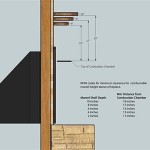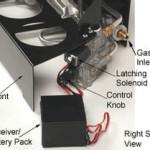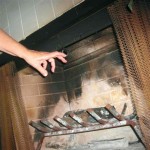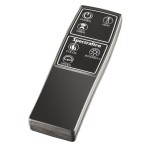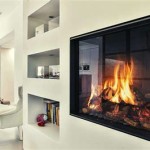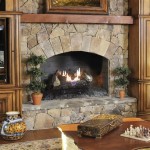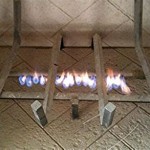Fireplace Kettle Humidifier: A Comprehensive Guide
Fireplace kettle humidifiers offer a unique and aesthetically pleasing method to increase humidity levels in a room heated by a fireplace. These devices, typically made of cast iron or other durable materials, sit directly on a fireplace mantel or even within the firebox when appropriate, utilizing the heat generated by the fire to evaporate water and release it into the air. Understanding the function, benefits, maintenance, and potential drawbacks of a fireplace kettle humidifier is crucial for informed decision-making regarding its use.
The basic principle behind a fireplace kettle humidifier is relatively simple. The kettle is filled with water and placed near or on the fireplace. As the fire burns, the metal of the kettle absorbs the heat. This heat, in turn, warms the water inside the kettle, causing it to evaporate. The steam then escapes through a spout or opening, increasing the humidity of the surrounding air. The effectiveness of the humidifier depends on several factors, including the size of the kettle, the intensity of the fire, and the overall size and ventilation of the room.
Key Point 1: Functionality and Operation
The operation of a fireplace kettle humidifier hinges on the principles of heat transfer and evaporation. The cast iron or other material used in the kettle's construction serves as an efficient conductor of heat. When placed near or on a lit fireplace, the kettle’s exterior absorbs the radiant heat from the fire. This absorbed heat then transfers to the water inside the kettle. As the water's temperature increases, its molecules gain kinetic energy, eventually reaching a point where they overcome the intermolecular forces holding them in the liquid state.
This transition from liquid to gas (evaporation) results in water vapor, or steam, being released into the surrounding atmosphere. The rate of evaporation is directly proportional to the intensity of the fire and the surface area of the water exposed within the kettle. A larger fire will provide more heat, leading to faster evaporation, while a kettle with a wider opening will allow for more water vapor to escape. The design of the kettle's spout plays a crucial role in directing the steam flow, influencing the dispersion of humidity within the room. Proper placement of the kettle in relation to the fire is essential to ensure optimal heat absorption and evaporation without causing damage to the kettle or creating a safety hazard.
The capacity of the kettle dictates how long it can humidify without requiring refilling. Larger kettles can hold more water, extending the humidification period. However, larger kettles also require more heat to bring the water to a boil. Therefore, the size of the kettle should be chosen based on the size of the room and the typical duration of fireplace use. Regularly checking the water level in the kettle is essential to prevent it from running dry, which could potentially damage the kettle and pose a fire risk.
Mineral content in the water used within the humidifier can affect its performance over time. Hard water, containing high levels of calcium and magnesium, can lead to the formation of mineral deposits inside the kettle. These deposits can reduce the kettle's efficiency in transferring heat and can also clog the spout, hindering the release of steam. Regular cleaning with vinegar or a specialized descaling solution can help prevent the buildup of mineral deposits and maintain optimal performance.
Key Point 2: Benefits of Using a Fireplace Kettle Humidifier
The primary benefit of using a fireplace kettle humidifier is to increase the humidity level in a room, which can alleviate several issues associated with dry air. During colder months, heating systems, including fireplaces, tend to dry out the air. This can lead to discomfort, such as dry skin, chapped lips, and irritated nasal passages. Increased humidity can help mitigate these symptoms, promoting overall comfort and well-being.
Beyond personal comfort, adequate humidity levels can also protect wooden furniture, musical instruments, and other sensitive items within a home. Dry air can cause wood to shrink and crack, potentially damaging valuable possessions. Maintaining a proper humidity level, typically between 30% and 50%, can help preserve the integrity of these items, extending their lifespan and preventing costly repairs.
Another often-overlooked benefit of fireplace kettle humidifiers is their aesthetic appeal. These kettles are often designed with decorative features, adding a touch of rustic charm to a fireplace or living room. They can serve as a functional art piece, enhancing the ambiance of the space while simultaneously providing a practical humidification solution. The gentle sound of boiling water can also create a calming and relaxing atmosphere.
Moreover, using a fireplace kettle humidifier can potentially reduce static electricity buildup in a room. Dry air is a significant contributor to static electricity, which can be annoying and even damaging to electronic devices. By increasing humidity, the build-up of static charge is reduced, making the environment more comfortable and preventing potential damage to sensitive equipment.
Finally, some users believe that adding certain essential oils to the water in the kettle can provide aromatherapy benefits. The heat from the fire helps to diffuse the essential oils into the air, creating a pleasant and therapeutic scent. Lavender oil, for example, is often used for its calming properties, while eucalyptus oil is used to help clear congestion. However, caution should be exercised when adding essential oils, as some may be flammable or corrosive and could damage the kettle. Always consult the manufacturer's instructions and use only oils specifically designed for use in humidifiers.
Key Point 3: Maintenance and Considerations
Maintaining a fireplace kettle humidifier is essential for ensuring its longevity and safe operation. Regular cleaning is crucial to prevent the buildup of mineral deposits and ensure efficient heat transfer. As mentioned earlier, hard water can leave behind residue that reduces the kettle's performance and can potentially damage the metal over time. Using distilled water can minimize this buildup, but regular cleaning is still recommended.
To clean a fireplace kettle humidifier, it is typically recommended to use a solution of vinegar and water. The kettle should be emptied and allowed to cool completely before cleaning. A mixture of equal parts vinegar and water can be poured into the kettle and allowed to sit for several hours, or even overnight, to loosen mineral deposits. After soaking, the kettle should be scrubbed with a non-abrasive brush or sponge to remove any remaining residue. Finally, the kettle should be thoroughly rinsed with clean water to remove any traces of vinegar.
The exterior of the kettle should also be cleaned regularly to remove soot and dust that may accumulate from the fireplace. A damp cloth can be used to wipe down the exterior, and a mild detergent can be used for more stubborn stains. It is important to avoid using harsh chemicals or abrasive cleaners, as these can damage the finish of the kettle. If the kettle has a decorative design, care should be taken to avoid scratching or damaging the artwork.
Safety is paramount when using a fireplace kettle humidifier. The kettle becomes extremely hot when placed near or on a lit fireplace, so it is important to handle it with caution. Always use oven mitts or a similar protective covering when handling the kettle, and keep children and pets away from the fireplace to prevent burns. It is also important to ensure that the kettle is placed on a stable surface to prevent it from tipping over, which could spill hot water and cause injury.
The type of material used in the construction of the kettle is also an important consideration. Cast iron is a popular choice because it is durable and retains heat well. However, cast iron can rust if not properly cared for. Some kettles are coated with enamel or other protective finishes to prevent rusting. Stainless steel is another durable option that is resistant to rust and corrosion. The choice of material will depend on individual preferences and budget, but it is important to select a kettle that is made from a durable and heat-resistant material.
Finally, consider the size of the room and the intensity of the fireplace when choosing a fireplace kettle humidifier. A small kettle may not be sufficient to humidify a large room, while a large kettle may be too intense for a small fireplace. Experimentation may be necessary to find the optimal size and placement for the kettle to achieve the desired humidity level without creating safety hazards or damaging the kettle.

Fireplace Kettle Humidifier Cast Iron Com

Panacea 15321 Fireplace Kettle Humidifier Cast Iron Toolbox Supply

Panacea Open Hearth Kettle Humidifier Black 1 Ct City Market

Kettle Humidifier Black In The Fireplace Accessories Department At Com

Morso Humidifier Wignells Heating Cooking

De Vielle Heritage Cast Iron Kettle Humidifier Ray Grahams Diy

Large Cast Iron Humidifier Kettle Fireplace Hearth Tea Pot

De Vielle 2 5l Cast Iron Kettle Humidifier Def760645 Ganly S

Adirondack Chair Fire Wood Stove Steamer Burning Cookery

Plow Hearth Cast Iron Pine Cone Design Wood Stove Steamer Kettle Humidifier Black Target
Related Posts

